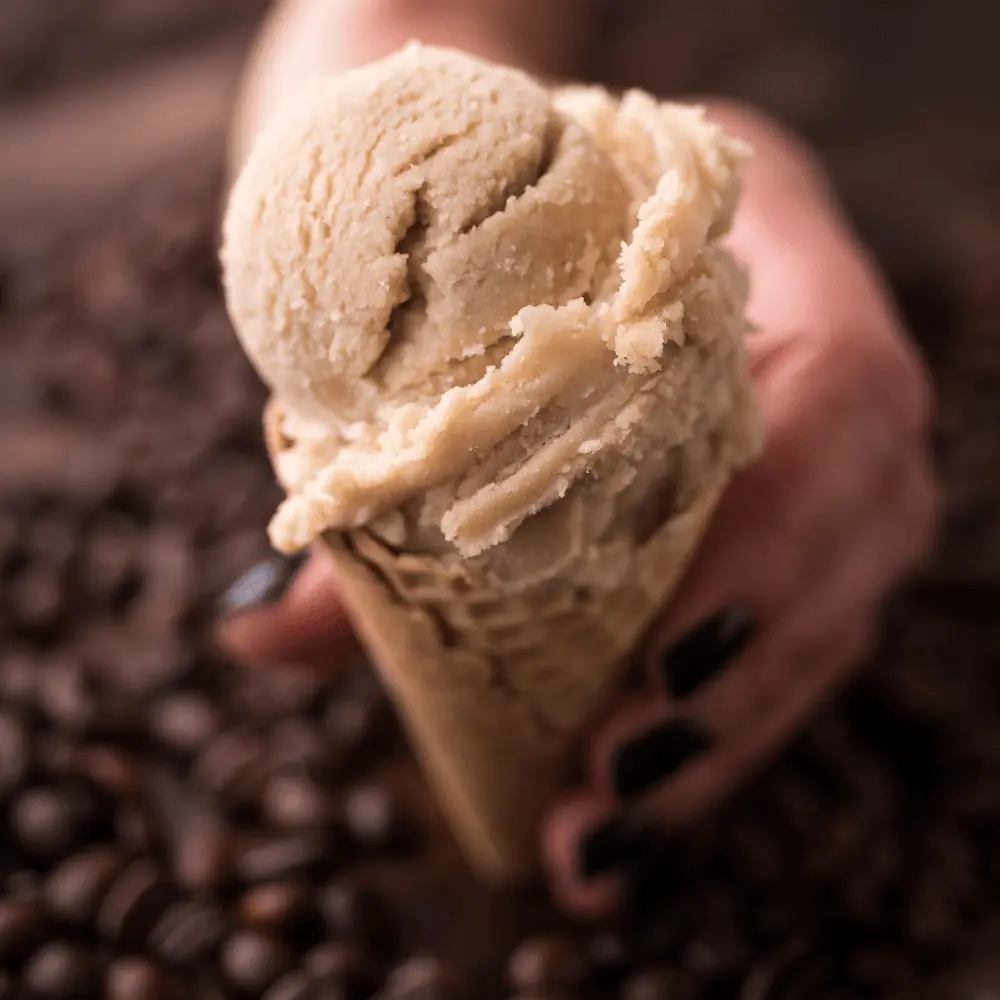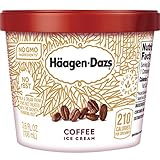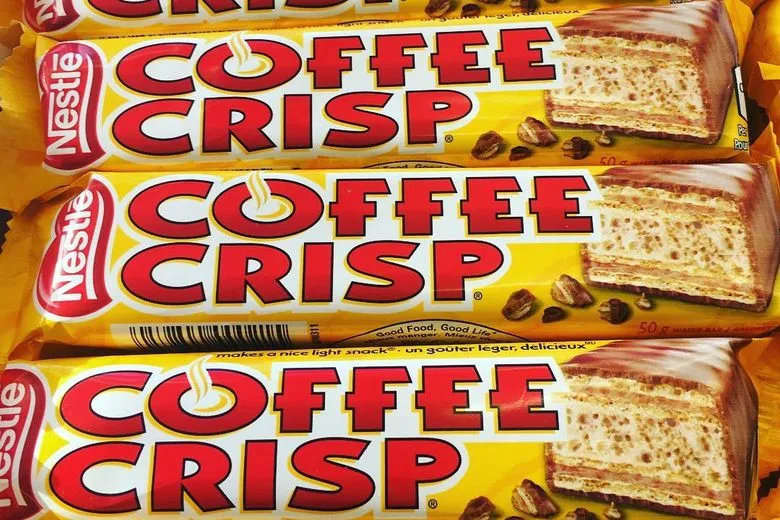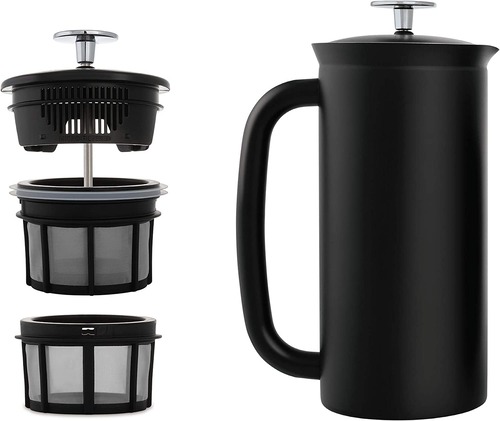Indulging in the exquisite treats of coffee and ice cream can bring immense joy to our taste buds. However, have you ever pondered the possibility of combining these two delights to create a caffeinated dessert? This intriguing question raises an important issue, “Does coffee ice cream have caffeine?” In this article, we delve into this matter and explore the amount and effects of caffeine in this popular frozen treat. With the emergence of specialty coffee shops and gourmet ice cream parlors, it’s critical to comprehend the nutritional value, potential health benefits, and risks of this ice cream. So, let’s dig deeper into the research and discover if your favorite scoop of coffee ice cream can give you a caffeine boost or not.
Caffeine in Coffee Ice Cream: Key Takeaway
- Sweet Buzz: Coffee ice cream can provide a small amount of caffeine, but comprehending the quantity and effects is crucial.
- The Caffeine Spectrum: The amount of caffeine in this ice cream can fluctuate based on the brand and recipe, with a half-cup serving containing approximately 30 to 65 milligrams of caffeine.
- A Nutritional Look: Coffee flavored ice cream generally has a similar nutritional profile to other ice cream flavors, albeit with variations based on the brand and recipe.
- Enjoy Responsibly: Overconsumption of caffeine can cause side effects such as anxiety, insomnia, and digestive issues. Hence, moderation is essential while consuming it.
- Weighing the Pros and Cons: Coffee and caffeine have been linked to several potential health benefits. However, it’s crucial to consider the overall nutritional value and choose brands and recipes that align with your individual needs and goals.
What is Coffee Ice Cream and Where Did it Originate From?
Coffee ice cream, a delightful frozen delicacy that has been relished for numerous years, has origins that date back to the 19th century. Its inception can be traced back to 1869 when it was first used in a parfait. A recipe for Egg Coffee, which is made using coffee syrup, cream, and crushed ice, appeared in a cookbook in 1919.

Howard Johnson’s is a popular chain that has been offering the ice cream on its menu for many years. According to Foodtimeline.org, coffee has been listed alongside classic ice cream flavors such as vanilla, chocolate, banana, macaroon, and coconut since at least the 1960s.
This ice cream is generally characterized by a creamy and lustrous texture with a strong coffee taste. It can be consumed alone or coupled with other desserts like cake or pie. It is now a popular flavor offered by many ice cream brands worldwide and is readily available in grocery stores and ice cream shops.
Caffeine Content in Popular Coffee Ice Cream Brands
When it comes to the caffeine content of coffee ice cream, determining its exact amount can be a tricky endeavor. The reason for this is the fact that it can vary based on a multitude of factors, such as the brand and recipe of the ice cream itself. Additionally, some brands may use real coffee or espresso in their ice cream, while others may use artificial flavors or other ingredients to achieve a coffee flavor. As such, it becomes crucial to take a closer look at the caffeine content of popular coffee flavored ice cream brands, to truly understand the caffeinated nature of this seemingly simple treat.
Ben & Jerry’s Coffee Toffee Bar Crunch
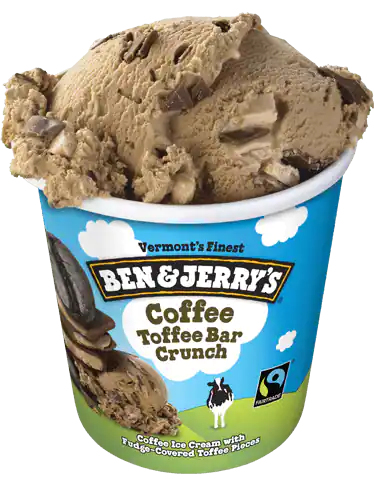
One such brand that requires scrutiny is Ben & Jerry’s. Their coffee-flavored ice cream contains a whopping 65 milligrams of caffeine per half-cup serving, which is approximately equivalent to a single shot of espresso. However, it’s important to note that this amount may vary slightly based on the batch and flavor of the ice cream.
Haagen-Dazs Coffee Ice Cream
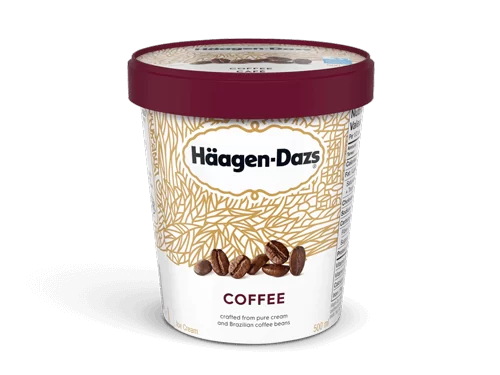
On the other hand, Haagen-Dazs coffee ice cream contains a relatively paltry 29 milligrams of caffeine per half-cup serving. This amount is less than half of what’s in Ben & Jerry’s.
Baskin-Robbins Jamoca Almond Fudge
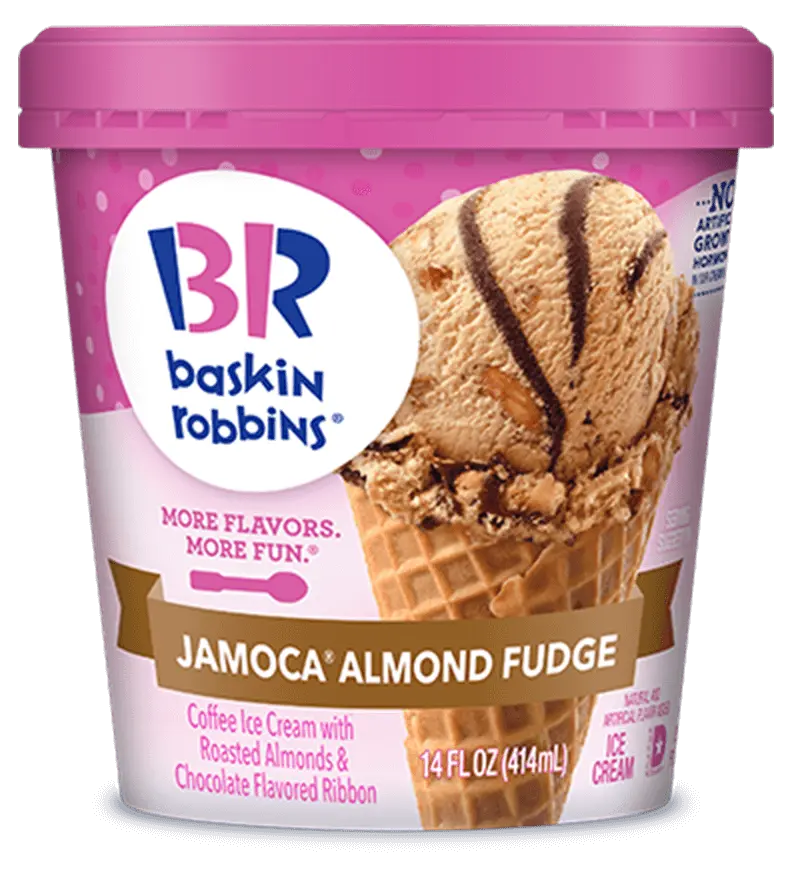
Another brand that can’t be ignored when discussing the amount of caffeine content is Baskin-Robbins. Their Jamoca Almond Fudge ice cream contains 30 milligrams of caffeine per half-cup serving, which is similar to Häagen-Dazs.
Can You Get a Caffeine Boost from Coffee Ice Cream?
For those whose affinity for coffee is insatiable and in constant search of an additional caffeine jolt, an inquiry may arise regarding whether the indulgence of coffee flavored ice cream could offer a similar effect. Henceforth, we delve into the intricacies of caffeine’s physiological processes and endeavor to ascertain whether consuming this delectable dessert can provide a caffeine boost.
How Caffeine Works in the Body
Caffeine is an organic stimulant inherent in several natural sources such as coffee, tea, chocolate, and various other consumables. Once caffeine is ingested, it permeates the bloodstream and subsequently crosses the blood-brain barrier, whereby it obstructs the action of adenosine, a neurotransmitter that instigates slumber and dampens alertness. Consequently, this effectuates heightened attention, vigor, and concentration, and temporarily reduces fatigue. (1)
Absorption, Distribution, and Metabolism of Caffeine
Caffeine’s bioavailability and metabolic processes are subject to individual variability, contingent on factors such as age, weight, genetics, dietary habits, and medication use. Ordinarily, caffeine is assimilated into the body within 45 minutes of ingestion and achieves its peak concentration in the bloodstream within 1 to 2 hours. Caffeine is metabolized by the liver, where it undergoes enzymatic degradation into metabolites that are subsequently excreted. (2)
Effects of Caffeine on the Brain and Body
The impact of caffeine on an individual’s physiological and neurological traits is predicated on the quantity ingested and idiosyncratic variables. Generally, caffeine amplifies attentiveness, energy, and concentration and improves mood and cognitive performance. Nonetheless, overindulging in caffeine can instigate adverse reactions such as restlessness, apprehension, and sleeplessness. (3)
Recommended Daily Limits for Caffeine Intake
The recommended daily dosage of caffeine is contingent on the demographic characteristics of an individual such as age, sex, and other specific factors. Typically, the FDA advocates that healthy adults limit their daily caffeine consumption to 400 milligrams, which translates to roughly four cups of coffee or ten cups of coffee flavored ice cream, factoring in the brand and recipe utilized. (4)
Conclusively, while the ice cream may provide a slight dosage of caffeine, it is unlikely to confer comparable effects to those obtainable from a cup of joe. It is crucial to exhibit prudence and mindfulness concerning one’s overall caffeine intake and to moderate consumption appropriately. If a caffeine boost is a prerequisite, coffee or other caffeinated sources may be more efficacious alternatives.
The Amount of Caffeine in Coffee Ice Cream
This delicious and beloved dessert can vary significantly in terms of its caffeine content depending on the brand and recipe employed in its preparation. The amount of caffeine present in a typical half-cup serving usually ranges from 30 to 65 milligrams, but this value is not cast in stone and can fluctuate based on multiple factors.

How Much Caffeine is Needed to Feel Its Effects?
The amount of caffeine required to elicit its effects is not set in stone and is subject to the vagaries of individual factors such as body weight, tolerance, and sensitivity to caffeine. Although most people may sense the effects of caffeine with doses as low as 10 milligrams, individuals seeking more robust and enduring effects, such as augmented energy and enhanced alertness, may need a more substantial dose, usually around 50 to 100 milligrams.
Possible Benefits and Risks of Consuming Caffeine
Caffeine, a popular psychoactive compound, is known to possess multiple potential benefits, including improved cognitive performance, reduced risk of particular ailments, and a boosted metabolism. Nevertheless, excessive caffeine consumption can trigger undesirable side effects such as anxiety, insomnia, and digestive issues. Moreover, different individuals have varying sensitivities to caffeine, and some may be more prone to caffeine-induced side effects than others. (5)
Who Should Avoid Caffeine or Limit Its Intake?
Specific groups of individuals, such as pregnant or nursing women, individuals with certain medical conditions like heart ailments or anxiety disorders, and children and adolescents, are usually advised to limit or avoid caffeine intake. It is imperative to consult your healthcare provider before consuming caffeine and to be cautious about your total caffeine intake throughout the day. (6)
In conclusion, this type of ice cream can provide a small amount of caffeine, but it is vital to comprehend the amount of caffeine needed to elicit its effects and the potential benefits and drawbacks of caffeine consumption. If you intend to consume caffeine, it is vital to do so in moderation and to be mindful of your unique needs and limitations.
Is Coffee Ice Cream a Good Source of Caffeine?
Delving into the domain of frozen desserts, we must examine the possibility of this ice cream serving as a potent caffeine source, and further scrutinize its nutritive profile. This section aims to scrutinize its nutritional content and juxtapose it with that of other ice cream flavors, to present an informed analysis.
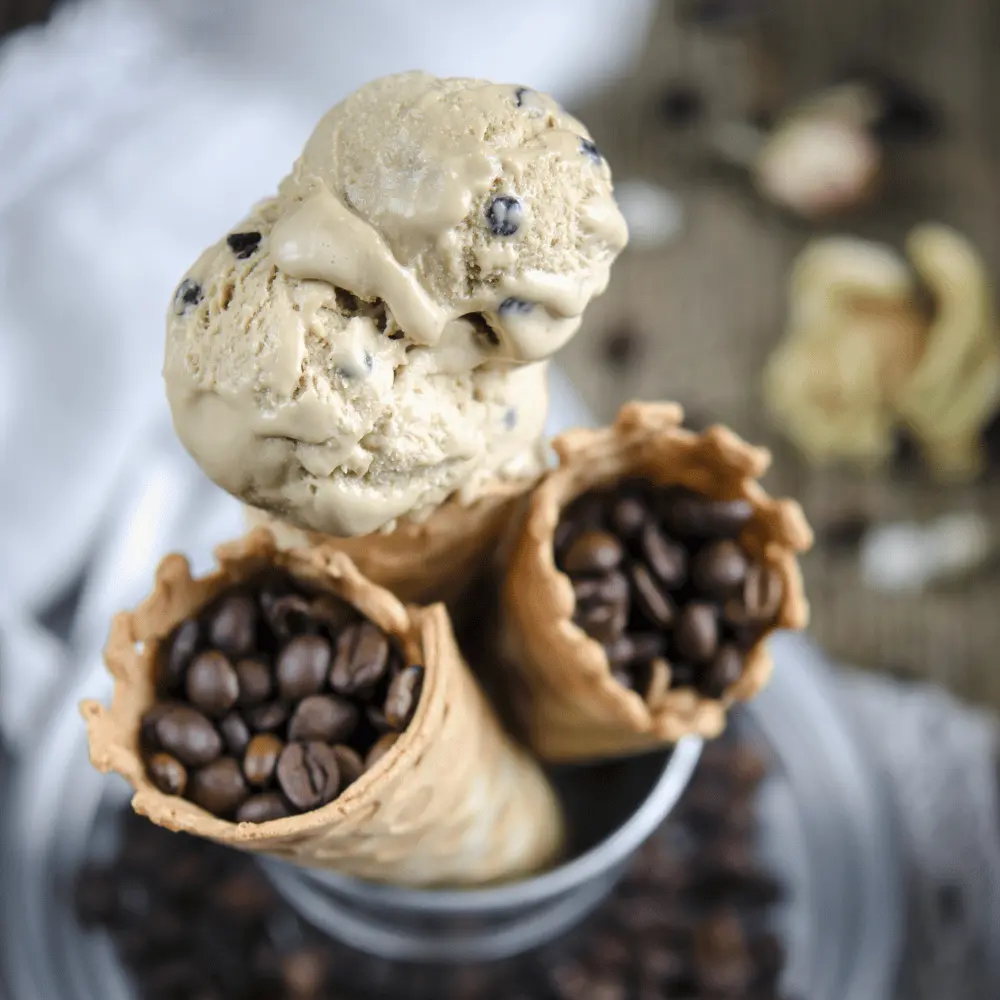
The Intricate Nutritional Composition of Coffee Flavored Ice Cream
While it is a fact that this delightful dessert contains a distinct nutritional makeup, the extent of this composition varies from one brand and recipe to another. To elucidate, let’s explore the essential constituents of this ice cream:
Caloric Content, Fat, Protein, and Carbohydrates
One serving of ice cream, measuring half a cup, typically equates to around 140-200 calories, contingent on brand and recipe, along with an estimated 7-12 grams of fat, 2-4 grams of protein, and 15-25 grams of carbohydrates. It is important to note that the nutritional content is influenced by the precise brand and recipe employed.
Vitamins and Minerals
In terms of vitamin and mineral content, the ice cream is known to possess trace amounts of nutrients, such as calcium, potassium, and vitamin A. However, the quantity of these nutrients is not of significant magnitude to classify it as a principal source of these vitamins and minerals.
Comparison with Other Ice Cream Flavors
The nutritional value of coffee flavored ice cream is analogous to that of other ice cream flavors, but as is the case with everything, there are subtle discrepancies that are contingent on the flavor and brand employed. It is noteworthy that certain flavors of ice cream may contain more or less sugar, fat, or calories. Furthermore, the employment of superior quality ingredients, such as natural flavorings and real cream, may substantially impact the overall nutritional value of the ice cream in question.
Health Benefits and Risks of Coffee Ice Cream
This type of dessert can indeed be a savory delight for both coffee and ice cream enthusiasts, but we mustn’t overlook its debatable health benefits and risks. In this section, we’ll embark on a journey to discover the potential benefits of coffee and caffeine consumption, along with the plausible risks of indulging in ice cream, and how to relish it sensibly.

Potential Benefits of Consuming Coffee and Caffeine
The enigmatic relationship between coffee and caffeine and our health has been a topic of great interest. Studies suggest that coffee and caffeine intake may have several potential benefits, such as enhancing cognitive performance, lowering the risk of specific diseases, and augmenting metabolism. Some evidence even hints that coffee consumption may reduce the likelihood of certain cancers, including liver and colorectal cancer, and may also decrease the possibility of type 2 diabetes and Parkinson’s disease.
Possible Risks of Consuming Coffee Ice Cream
Although coffee and caffeine consumption can be advantageous, excessive intake may lead to adverse side effects, such as anxiety, insomnia, and gastrointestinal discomfort. Furthermore, ice cream often contains added sugar and fat, which can lead to undesirable weight gain and other health issues if consumed extravagantly. It’s imperative to be prudent in your overall consumption of it and to partake in moderation as part of a balanced diet.
How to Enjoy Coffee Ice Cream in Moderation
To relish coffee flavored ice cream judiciously, consider limiting your portion size to a diminutive serving and enjoying it as an occasional treat instead of a routine part of your diet. Moreover, ponder on choosing brands with lower sugar and fat content and eschew toppings and mix-ins that can escalate the calorie and sugar content. It’s also crucial to be mindful of your overall caffeine intake throughout the day and to consume caffeine in moderation.
National Coffee Ice Cream Day
Did you know that there is a special occasion that honors this beloved frozen dessert? Observed annually on September 6th, this day is a time for both coffee and ice cream enthusiasts to relish the delectable flavor of this ice cream.
For many years, this ice cream has been a cherished flavor, and it comes as no surprise that it has its own dedicated day of celebration. Whether it is enjoyed in a cone or as part of a sundae, this ice cream offers a rich and velvety texture that is full of a robust coffee flavor.
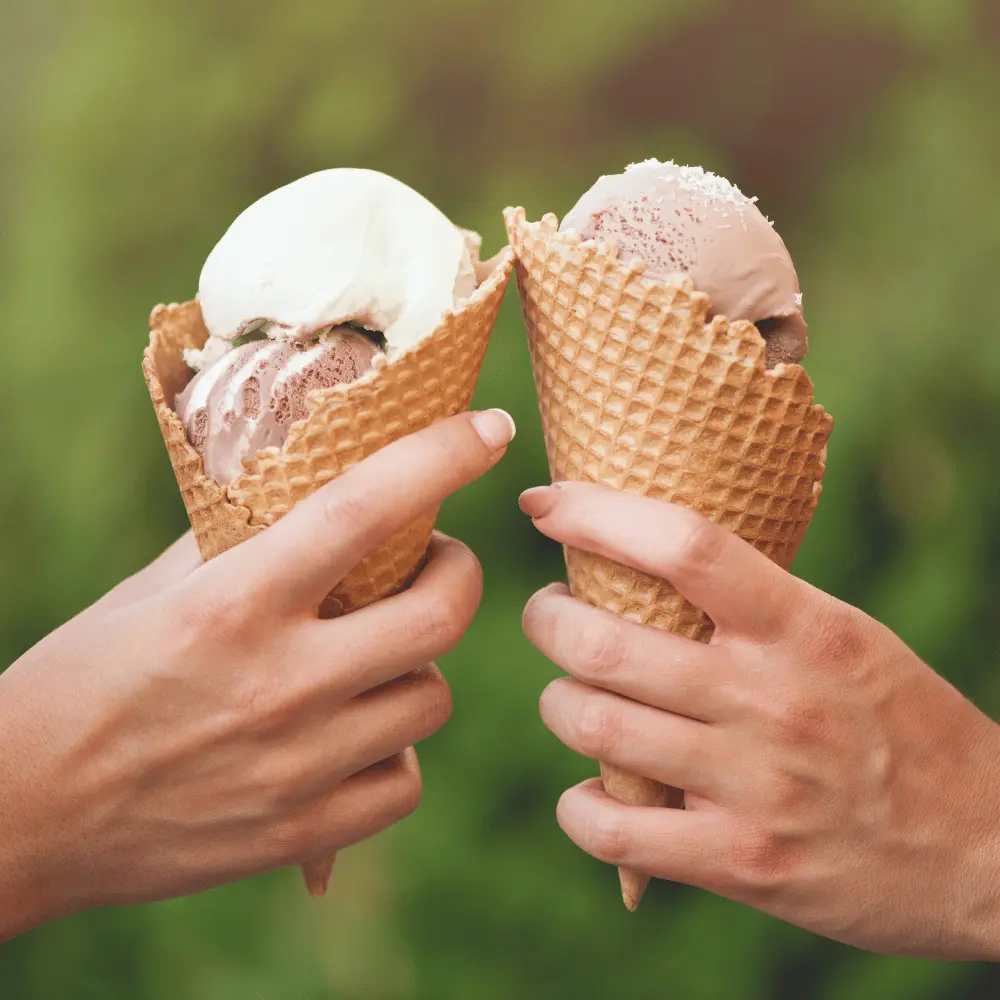
To mark the celebration of this day, many ice cream shops and retailers may offer special discounts or promotions for this flavor. This day is also an excellent opportunity to try making your own ice cream at home, using your preferred recipe or experimenting with various flavors and ingredients.
Regardless of whether you prefer your coffee piping hot or cold, there is no denying the charm of delicious ice cream. Therefore, on September 6th, indulge in a scoop (or maybe two) of your favorite ice cream and relish in the taste of National Coffee Ice Cream Day!
Conclusion
In the ultimate analysis, coffee ice cream can furnish a trifling dose of caffeine and a delectable variation on a timeless delicacy. Although it may not impart the same magnitude of caffeine jolt as a cup of coffee, it can still offer a pleasurable channel to assimilate caffeine into your regimen. It is crucial to maintain an awareness of your comprehensive caffeine consumption and to partake of coffee-flavored ice cream judiciously as an element of a well-proportioned diet. Furthermore, it is vital to take into account the nutritional worth of coffee flavored ice cream and to opt for brands and formulations that are in sync with your requirements and aspirations. By making judicious choices and enjoying coffee-flavored ice cream in moderation, you can relish its savory essence while simultaneously giving precedence to your vitality and wellness.
FAQ
Is the Caffeine Content in Coffee Ice Cream Comparable to That in Regular Coffee?
It's important to note that the caffeine content in this type of ice cream is typically lower than that found in a standard cup of coffee. While a half-cup serving of this fascinating dessert can furnish a small quantity of caffeine, it's improbable to produce identical effects as a cup of coffee would.
Can Coffee Ice Cream Give You a Caffeine Kick?
Although this ice cream can deliver a modest amount of caffeine, it's doubtful that it would provide the same effects as a cup of coffee. One should exercise prudence concerning caffeine consumption.
What Are the Health Benefits and Risks of Coffee Ice Cream?
Coffee and caffeine have been linked to numerous potential health benefits, such as boosting cognitive performance, reducing the possibility of certain ailments, and enhancing metabolism.
How Can You Relish Coffee Ice Cream Without Consuming an Excessive Amount of Caffeine?
To relish coffee ice cream without going overboard with caffeine, consider limiting your consumption to a small serving size and viewing it as an occasional treat rather than a regular part of your diet. Additionally, consider opting for brands with lower sugar and fat content and steer clear of toppings and mix-ins that can augment the calorie and sugar content. It's also essential to be conscious of your overall caffeine intake throughout the day and consume caffeine judiciously.
